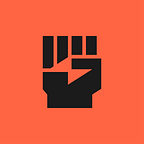Waves 2021: turning the page
2020 has been a difficult year, but at least one good thing has happened: the bear market for crypto came to an end. Since 2018, the crypto space had been in a situation similar to the dot-com crash, and only recently the market turned obviously bullish. So, we are now at the beginning of a new phase in blockchain technology development, which will be marked by mass adoption and deeper penetration of distributed ledger tech.
It is not surprising that so far, we have basically had only two successful blockchain use cases, which are quite similar to each other. It is value transfer in two forms: simple decentralized value transfer and algorithmic value transfer (DeFi). These are huge use cases, and we need to scale them up, but the new phase will bring new use cases, and we should keep that in mind. Those new use cases might require totally new approaches, questioning the basic principles of current distributed ledgers.
But, in any case, in the short term, DeFi applications are likely to stay most important. It’s vital to provide adequate tools for the next leg of DeFi development, tools that will enable scaling beyond the current nascent phase. We will need cheaper and faster transactions, more security and better liquidity utilization.
Waves already offers very fast and cheap transactions, and successful DeFi products, such as the Neutrino protocol. The upcoming Ride programming language update will enhance the functionality of Waves DeFi, surpassing the scope of features currently available on Ethereum. For instance, it will be possible to execute scripts of any complexity.
Gravity, an interchain network developed in the Waves ecosystem, will allow us to tap into liquidity on other chains, eventually blurring the borders between different networks. Swop.fi, a liquidity pool on Waves, will issue its governance token in early 2021, and lending pools will also be launched. In addition, next year will see research into enhanced AMM approaches and better ways to use liquidity.
DeFi took off mostly as a way to lend and swap tokens on-chain, and these are the major use cases that needed to be properly decentralized first. But the finance space is, of course, much wider: it also encompasses insurance, remittance etc. Therefore, we’re trying to look for new directions of finance decentralization. Our DeFo initiative is meant to provide a low-level layer for savings and remittance based on national currencies. Synthetic assets, tied to various real-world assets and based on the underlying Waves economy, can become a flexible tool for building international money transfer networks. The DeFo protocol development also aims at handling more volatile assets, and, in 2021, we plan to launch synthetic assets tied to bitcoin and stocks.
Meanwhile, DeFi is beginning to find inroads beyond the crypto community. Next year, it will start to affect traditional finance, and we’ll see many attempts to build semi-trustless solutions combining the best of both worlds.
Enterprise DeFi applications will soon become a reality. This trend is supported by the Waves ecosystem, as well. Waves Enterprise is going to have projects focused on connecting DeFi to the world of traditional finance. Expect to be able to swap Tesla stock on-chain on the Waves or Waves Enterprise chain!
As I already mentioned, the new phase of the industry development will trigger new use cases. I got attracted by blockchain technology mostly because it offers us a new paradigm of social interaction, where we replace social consensus with the technical one. Purely monetary applications will begin to intertwine with distributed collaboration tools and decentralized autonomous organizations (DAOs). I strongly believe that DAOs are the next big thing in crypto, and we are still at the initial stages of something that will change the way society works in general. I will be personally focusing on DAO research in 2021, and I’ll try to launch the first new-gen DAO on Waves.
New applications might make us revisit even the basic principles of distributed ledger technology. Mass adoption of trustless applications will impose strict scalability requirements, which will be hard to meet with the current approaches. In 2021, we will announce Waves 2.0. It will include the best of what we have now, also taking into account the need for interchain interaction and scalable DeFi apps. But my hope is that it will also facilitate future inroads into trustless apps beyond blockchains.
